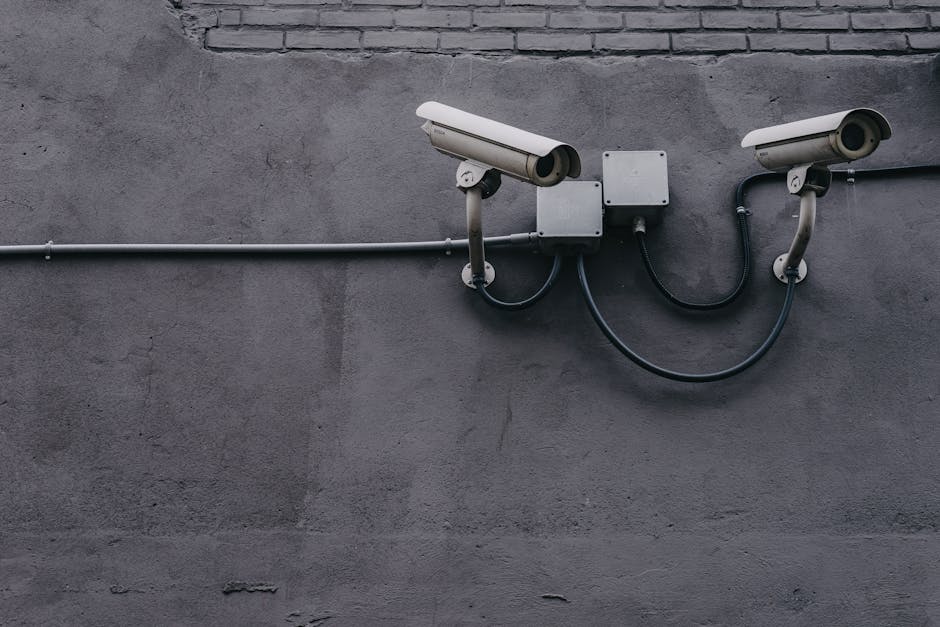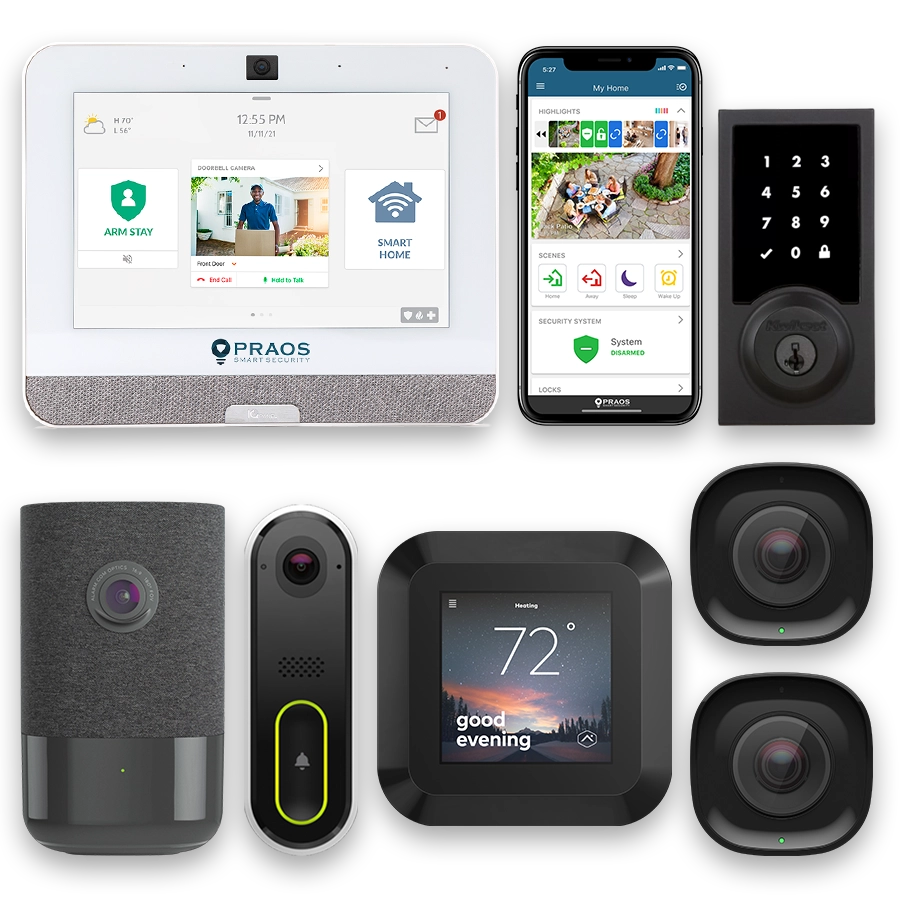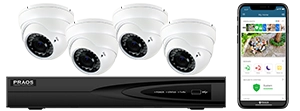- Introduction to Advanced Home Security Camera Systems
- Technological Advancements and Features of Modern Security Cameras
- Privacy Concerns Associated with Home Security Cameras
- Legal and Ethical Frameworks Governing Surveillance
- Balancing Security Needs and Privacy Rights
- Case Studies and Real-World Examples
- Future Trends and Considerations in Home Security and Privacy
Introduction to Advanced Home Security Camera Systems
Advanced home security camera systems have transformed how we safeguard our homes and loved ones. In recent years, these systems have evolved significantly, incorporating cutting-edge technology that not only enhances security but also integrates seamlessly into modern smart homes. This integration is aimed at providing a holistic security solution that is both user-friendly and highly efficient.
At the forefront of this innovation stands Praos, a leading local Richmond home security company dedicated to ensuring the safety of families and homes. With years of local expertise and an award-winning service track record, Praos offers a range of advanced home security solutions designed to meet the unique needs and budgets of their customers.
Praos provides new customers with a monitored new system plan that includes FREE Equipment and Free Installation. This commitment to service excellence is further evidenced by the tailored approach they take in designing smart home systems. Praos leverages the latest technology to create a truly connected home experience, allowing users to monitor and control security, automation, and surveillance through a single, integrated app.
One of the key benefits of Praos’ systems is the peace of mind they offer. No matter where you are, you can feel assured that your home is being monitored and protected by a reliable security company. The company’s rates are competitive, starting at just $19.95 per month, making advanced home security accessible to a wide range of customers.
As the landscape of home security continues to evolve, companies like Praos are at the forefront, blending advanced technology with personalized service to provide robust security solutions. This not only enhances the safety of homes but also ensures that users experience convenience and control over their home environment. The ethical implications of these advancements, particularly in balancing privacy and protection, form a crucial part of the ongoing dialogue in this field.
Technological Advancements and Features of Modern Security Cameras
Modern security cameras have seen significant technological advancements, which have enhanced their effectiveness and functionality. One of the primary innovations is the integration of high-definition (HD) and ultra-high-definition (UHD) imaging capabilities. Cameras now commonly offer resolutions of 1080p, 4K, and higher, allowing for clearer and more detailed video footage.
Another major development is the inclusion of smart technology. Many contemporary security cameras are equipped with artificial intelligence (AI) and machine learning algorithms. These technologies enable features such as person detection, facial recognition, and even the ability to differentiate between humans, animals, and inanimate objects. This ensures that alerts are more precise and reduces the number of false alarms.
Cloud storage and remote access have become standard features, allowing users to store video footage securely offsite and access live or recorded footage from any location via mobile devices. This is facilitated through user-friendly mobile apps and integration with home automation systems, making it easier to monitor security from anywhere in the world.
Night vision capabilities have also improved significantly. Modern security cameras use infrared (IR) LEDs or low-light technology to ensure clear visibility in complete darkness. Some advanced models offer color night vision, which enhances the level of detail and accuracy of the recorded footage even in low-light conditions.
The advent of motion detection and smart alerts has enhanced the functionality of home security cameras. Modern systems are designed to detect movement and send real-time alerts to users via text messages or app notifications. This allows for prompt responses to potential intrusions or unusual activities.
Other notable features include two-way audio systems, which allow homeowners to communicate directly with individuals on their property, and, weather-resistant designs, making the cameras suitable for both indoor and outdoor use. Additionally, some advanced models offer pan, tilt, and zoom (PTZ) capabilities, providing a wider range of coverage and more control over the monitoring area.
End-to-end encryption has become a critical feature to ensure the security and privacy of the video data. This encryption prevents unauthorized access and interception of video feeds, providing users with peace of mind regarding the safety of their data.
- High-definition (HD) and ultra-high-definition (UHD) imaging
- Integration of AI and machine learning
- Cloud storage and remote access capabilities
- Improved night vision and color night vision
- Enhanced motion detection and smart alerts
- Two-way audio and, weather-resistant designs
- Pan, tilt, and zoom (PTZ) capabilities
- End-to-end encryption for data security
Privacy Concerns Associated with Home Security Cameras
The proliferation of advanced home security camera systems has raised substantial privacy concerns. As these systems become more sophisticated, the potential for intrusive surveillance increases. Privacy issues range from data breaches and unauthorized access to the constant monitoring of household activities.
One major concern is the collection and storage of personal data. Modern security cameras often record high-definition video and audio, which can include sensitive information about daily routines, personal interactions, and even intimate moments. Such data, if not adequately protected, can become a target for cybercriminals. According to a report by the U.S.-based consumer advocacy group Privacy Rights Clearinghouse, over 1,000 data breaches involving private surveillance footage were documented in the past decade.
Unauthorized access to security camera footage is another critical issue. Instances where hackers have gained control of home security systems are not uncommon. In 2019, a high-profile case involved hackers exploiting vulnerabilities in Ring cameras, leading to unauthorized surveillance of residents. Such breaches highlight the risks associated with the connectivity features of modern security cameras.
The implications for third party data sharing are also significant. Many security camera systems operate through cloud-based storage solutions, often managed by third party companies. This approach can introduce risks related to how these companies handle and protect the data. Policies regarding data retention, sharing with law enforcement, and usage for commercial purposes frequently lack transparency, as highlighted by the Electronic Frontier Foundation (EFF) in its 2020 review of consumer privacy practices.
Another aspect of privacy concern is the intrusiveness of constant surveillance. The fact that residents are continuously monitored can create a sense of being perpetually watched, which can infringe on personal freedom and domesticity. This feeling of ‘ubiquitous surveillance’ can have psychological effects, leading to stress and anxiety as noted in a study published by the American Psychological Association.
Furthermore, security cameras may inadvertently capture individuals outside the household, such as neighbors or passersby, raising questions about the right to privacy for these individuals. Legal frameworks vary significantly by region, but there is a consensus that capturing and storing footage of individuals without their consent can lead to legal disputes and ethical dilemmas.
Finally, the integration of facial recognition technology in security cameras presents additional privacy issues. While it can enhance security by identifying intruders, it also poses risks of misidentification and profiling. Instances of misidentification can lead not only to wrongful accusations but also to broader concerns about surveillance overreach. According to the National Institute of Standards and Technology (NIST), facial recognition algorithms are susceptible to biases, which can disproportionately affect minority communities.
In summary, the advancement of home security camera systems, while beneficial for security purposes, brings with it a host of privacy-related issues that need to be carefully managed and regulated to ensure ethical use. The balance between enhanced protection and the right to personal privacy is delicate and requires ongoing attention and improvements in both technology and policy frameworks.
Legal and Ethical Frameworks Governing Surveillance
The legal and ethical frameworks governing home security camera surveillance are complex and varied, reflecting the diversity of jurisdictions and cultural perspectives on privacy. One of the primary legal frameworks involves data protection laws which aim to safeguard personal information captured by these systems. For instance, the General Data Protection Regulation (GDPR) in the European Union sets stringent guidelines on data processing and mandates clear consent from individuals whose data is being collected.
In the United States, laws such as the Electronic Communications Privacy Act (ECPA) and specific state regulations address the usage of surveillance technologies. These laws are designed to prevent unauthorized interception and ensure that any form of surveillance respects individual privacy. Nonetheless, the legal landscape in the U.S. is fragmented, with varying statutes across states that can lead to confusion among homeowners regarding compliance.
Beyond legal requirements, numerous ethical considerations come into play. The principle of transparency is crucial; homeowners should inform occupants and visitors about the presence of security cameras. This communication fosters trust and aligns with broader ethical practices in surveillance. A lack of transparency can lead to mistrust and potential conflicts, emphasizing the need for clear, explicit notices about surveillance activities.
Another ethical concern is the scope and scale of surveillance. Cameras that excessively cover areas beyond the property, such as neighboring homes or public spaces, risk infringing on the privacy rights of others. Ethical frameworks suggest that security systems should be carefully calibrated to monitor specific, necessary areas, thereby minimizing undue invasion into non-relevant spaces.
Issues of data retention and access further complicate the ethical landscape. Questions arise regarding how long footage should be stored and who has access to it. Ethical guidelines recommend implementing strict data retention policies that limit storage to the minimal duration necessary for security purposes and ensuring robust access controls to prevent misuse of the data. Regular audits and compliance checks can help in maintaining these standards.
Lastly, the rise of artificial intelligence (AI) in security cameras introduces additional ethical dimensions. AI-driven features such as facial recognition and behavioral analysis have significant privacy implications. Ethical usage of AI in home security systems necessitates rigorous oversight, accountability measures, and adherence to principles such as fairness and non-discrimination. Ensuring that AI technologies do not perpetuate biases or lead to unwarranted surveillance intensifies the ethical responsibility of manufacturers and users alike.
In conclusion, navigating the legal and ethical frameworks governing home security camera systems requires a balanced approach that respects both security needs and privacy rights. Comprehensive understanding and adherence to relevant laws, along with the integration of ethical practices, are essential in responsibly leveraging these advanced technologies.
Balancing Security Needs and Privacy Rights
Balancing the need for security with the right to privacy in the context of advanced home security camera systems presents a complex ethical challenge. As these systems become more sophisticated, the potential for both enhancing safety and infringing on personal privacy increases.
Understanding the Trade-Offs
Advanced home security cameras offer numerous benefits, including deterrence of criminal activities, emergency response facilitation, and remote monitoring capabilities. However, these benefits come with trade-offs that must be carefully considered. An essential aspect of balancing security and privacy is understanding these trade-offs and making informed decisions based on them.
- Deterrence vs. Intrusiveness: While visible security cameras can deter crime, they can also be perceived as invasive, potentially making residents and visitors uncomfortable.
- Data Collection vs. Privacy: Modern systems collect vast amounts of data, raising concerns over who has access to this data, how it is stored, and for how long.
- Emergency Response vs. Surveillance: The ability to quickly respond to emergencies is enhanced by constant surveillance, yet this also means constant monitoring of day-to-day activities.
Strategies for Achieving Balance
To strike an appropriate balance between security needs and privacy rights, several strategies can be implemented:
- Transparent Policies: Clear and transparent policies about data usage can help users understand how their information is being used and by whom. These policies should include details about data storage, sharing, and retention practices.
- Consent and Autonomy: Obtaining consent from all parties being recorded can mitigate privacy concerns. Empowering users to control their data, such as enabling them to delete footage, is also crucial.
- Minimal Data Collection: Advanced features should be used judiciously to collect only the necessary amount of data to meet security objectives, thereby limiting privacy invasion.
The Role of Regulation
Regulatory frameworks play a critical role in ensuring that the implementation of security camera systems remains ethical. These frameworks typically address three key areas:
- Scope of Surveillance: Defining what areas can be recorded and under what conditions to prevent overreach.
- Data Protection Standards: Establishing stringent data protection standards to ensure the safety and privacy of collected information.
- Accountability Mechanisms: Implementing mechanisms for accountability, including audits, reporting requirements, and penalties for non-compliance.
Community and Ethical Considerations
Beyond regulatory compliance, ethical considerations and community acceptance are vital. Community engagement and dialogue can play a significant role in ensuring that security measures are viewed as protective rather than oppressive. When residents understand the benefits and limitations of security systems, and when their concerns are addressed, the implementation becomes more ethically sound and socially accepted.
- Community Input: Involving community members in the decision-making process ensures that their privacy concerns are considered and addressed.
- Ethical Guidelines: Developing ethical guidelines that prioritize respect for privacy while achieving security goals can help navigate the complexities involved.
In conclusion, balancing security needs with privacy rights requires a multifaceted approach that includes transparent policies, minimal data collection, regulatory adherence, and community engagement. By carefully considering these factors, it is possible to implement home security camera systems that respect individual privacy while providing effective protection.
Case Studies and Real-World Examples
Several real-world instances offer insight into the ethical and practical implications of implementing advanced home security camera systems. These case studies demonstrate how such systems can effectively improve security and safety while simultaneously posing significant privacy challenges.
Neighborhood Surveillance Initiatives
One notable example is the installation of community-wide surveillance systems in various neighborhoods across the United States. Many communities have partnered with local law enforcement to integrate home security cameras on a voluntary basis. This partnership enables police to access footage during investigations, leading to a higher rate of solving crimes. According to a study by the Urban Institute, neighborhoods with such initiatives experienced a 20% reduction in property crimes over a two-year period.
However, these initiatives raise significant privacy issues. Critics argue that continuous monitoring can lead to unnecessary scrutiny and potential misuse of footage. Moreover, individuals within these neighborhoods often have inconsistent awareness regarding their surveillance, fueling debates over informed consent and privacy rights.
Commercial Adoption by Tech Companies
Another example is the widespread adoption of advanced security systems by technology companies such as Amazon’s Ring. The Ring camera system gained popularity for its mobile app integration, two-way communication, and motion-detection features, leading to millions of installations globally. An article from The New York Times highlighted how Ring’s Neighbors app allows users to share footage and report suspicious activities within their community.
Despite its benefits, Ring’s practices have been scrutinized for potential privacy violations. An investigation by the Electronic Frontier Foundation found that Ring’s systems shared user data with third party companies without adequate disclosure, prompting calls for improved privacy protocols and tighter regulation.
Smart Home Integration and Data Sharing
The integration of security cameras with smart home devices, such as those offered by Google Nest, exemplifies the dual benefits and risks associated with modern home security systems. These integrated systems offer increased convenience and security through features like facial recognition, remote access, and intelligent alerts. Nest’s ecosystem can, for example, notify homeowners of potential security breaches while simultaneously adjusting lighting and thermostat settings to conserve energy.
However, the collection and storage of data generated by these systems can lead to potential abuse. In 2019, a report by Consumer Reports flagged concerns regarding the storage of video data on cloud servers susceptible to hacking. It urged consumers to utilize robust security measures such as two-factor authentication to mitigate risks.
Ultimately, these case studies highlight the complex interplay between enhancing security and maintaining privacy. They underline the necessity for ongoing dialogue and regulatory oversight to address emerging ethical concerns effectively.
Future Trends and Considerations in Home Security and Privacy
The future of home security camera systems is shaped by rapid technological advancements and evolving societal attitudes toward privacy and protection.
One significant trend is the increasing use of artificial intelligence (AI) and machine learning, which enable advanced features such as facial recognition, object detection, and behavioral analysis. These technologies improve the accuracy and effectiveness of surveillance systems, but they also raise substantial privacy concerns. For example, facial recognition technology can potentially misidentify individuals or be used for unauthorized surveillance purposes.
Another trend is the integration of home security cameras with other smart home devices, creating more interconnected and automated environments. This integration can enhance security by allowing devices to communicate and respond to potential threats in real-time. However, it also presents new risks, such as the potential for cyber-attacks or unauthorized access to multiple devices within the home network.
In addition to technological advancements, there is a growing emphasis on data privacy and security. Consumers are becoming more aware of the importance of protecting their personal information and are demanding greater transparency from companies regarding data collection and usage practices. This shift is prompting manufacturers to implement stronger encryption methods and offer more comprehensive privacy settings.
Moreover, the regulatory landscape for home security cameras is likely to evolve as governments and organizations address the balance between security and privacy. Policymakers may introduce new laws and standards to ensure that surveillance technologies are used responsibly and that individuals’ rights are protected.
The table below highlights some of the key trends and considerations in the future of home security camera systems:
| Trend | Consideration |
|---|---|
| Artificial Intelligence and Machine Learning | Enhanced accuracy and functionality versus increased privacy concerns |
| Integration with Smart Home Devices | Improved security responses versus higher risk of cyber-attacks |
| Data Privacy and Security | Enhanced consumer protection versus need for transparency from manufacturers |
| Regulatory Developments | Greater legal oversight versus potential challenges in enforcement |
As the technology behind home security camera systems continues to evolve, it is essential for all stakeholders—including manufacturers, consumers, and policymakers—to consider the ethical implications and strive for a balance that respects both privacy and protection.






